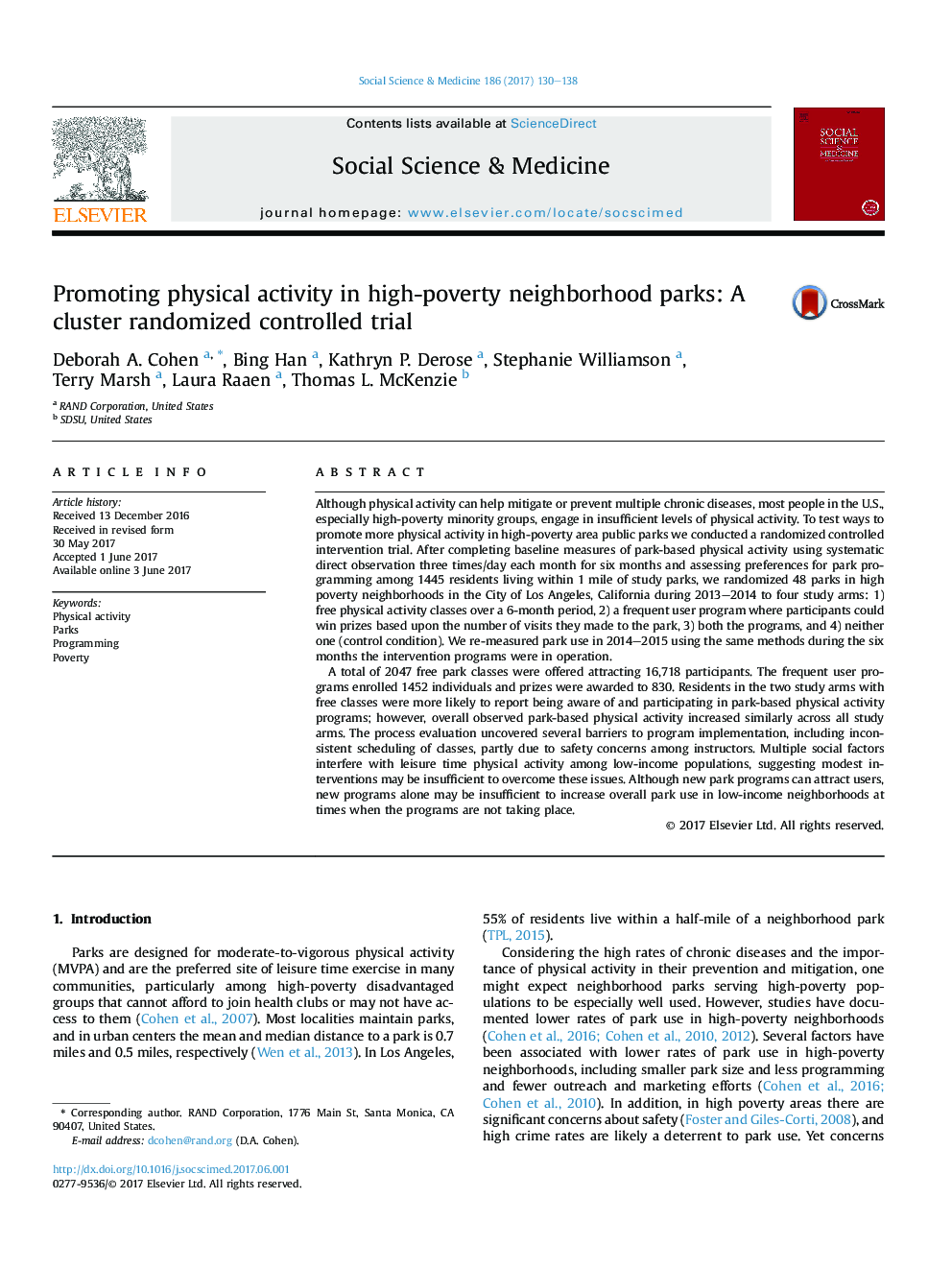| Article ID | Journal | Published Year | Pages | File Type |
|---|---|---|---|---|
| 5046391 | Social Science & Medicine | 2017 | 9 Pages |
â¢A park-level RCT promoting physical activity compared free classes to a frequent user program.â¢16,718 visits made to free classes; 7860 sign-ins in the frequent user program.â¢Reach, awareness and participation in programs was greater in parks with free classes.â¢On average, park-based physical activity increased, but there were no differences across the study arms.
Although physical activity can help mitigate or prevent multiple chronic diseases, most people in the U.S., especially high-poverty minority groups, engage in insufficient levels of physical activity. To test ways to promote more physical activity in high-poverty area public parks we conducted a randomized controlled intervention trial. After completing baseline measures of park-based physical activity using systematic direct observation three times/day each month for six months and assessing preferences for park programming among 1445 residents living within 1 mile of study parks, we randomized 48 parks in high poverty neighborhoods in the City of Los Angeles, California during 2013-2014 to four study arms: 1) free physical activity classes over a 6-month period, 2) a frequent user program where participants could win prizes based upon the number of visits they made to the park, 3) both the programs, and 4) neither one (control condition). We re-measured park use in 2014-2015 using the same methods during the six months the intervention programs were in operation.A total of 2047 free park classes were offered attracting 16,718 participants. The frequent user programs enrolled 1452 individuals and prizes were awarded to 830. Residents in the two study arms with free classes were more likely to report being aware of and participating in park-based physical activity programs; however, overall observed park-based physical activity increased similarly across all study arms. The process evaluation uncovered several barriers to program implementation, including inconsistent scheduling of classes, partly due to safety concerns among instructors. Multiple social factors interfere with leisure time physical activity among low-income populations, suggesting modest interventions may be insufficient to overcome these issues. Although new park programs can attract users, new programs alone may be insufficient to increase overall park use in low-income neighborhoods at times when the programs are not taking place.
